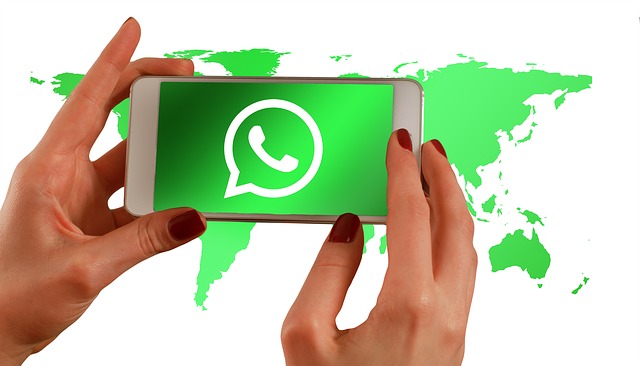 The popularity of social messaging apps has increased tremendously the last couple of years. More people now use the top four social messaging apps (WhatsApp, Messenger, WeChat, and Viber) than the top four social media apps (Facebook, Instagram, Twitter, and LinkedIn), according to Business Insider research. More than two-thirds of app users said they expected to communicate more with businesses, according to a Nielson survey. More than half said they are more likely to shop with a business they could message directly. Many experts predict that messaging apps will emerge as a potent marketing tool. Yet Buffer’s State of Social 2018 survey done with Social Media Week found that just 20 percent of businesses have invested in marketing through messenger platforms.
The popularity of social messaging apps has increased tremendously the last couple of years. More people now use the top four social messaging apps (WhatsApp, Messenger, WeChat, and Viber) than the top four social media apps (Facebook, Instagram, Twitter, and LinkedIn), according to Business Insider research. More than two-thirds of app users said they expected to communicate more with businesses, according to a Nielson survey. More than half said they are more likely to shop with a business they could message directly. Many experts predict that messaging apps will emerge as a potent marketing tool. Yet Buffer’s State of Social 2018 survey done with Social Media Week found that just 20 percent of businesses have invested in marketing through messenger platforms.
Falling Social Media Reach Will Push Marketers to Messaging Apps
As organic social media reach continues to decline, more marketers will experiment with messaging apps to connect with their audience. More than half of marketers (55 percent) agreed or strongly agreed that their organic Facebook reach had declined over the previous 12 months.
Facebook recently announced that its news feed algorithm will assign lower priority to posts from businesses and stress posts from personal connections, raising fears that organic reach of many brands will drop to almost nothing. Facebook remains the leading social media platform for marketers: 96 percent say their business actively uses it. Twitter follows next with 89 percent.
Companies like Facebook will begin to focus on how they can monetize messaging apps, also called chat apps, predicts Buffer’s Ash Read. That will open new advertising opportunities for marketers.
Messaging Apps Require a Different Communications Approach
“Messenger apps provide a much more personal and direct form of communication than traditional social networks or other forms of marketing, so you need to take a different approach that truly puts the customer’s wants and expectations first,” writes Christina Newberry at Hootsuite. Using chat apps is often compared to texting. Messages are sent through the app’s interface and the internet rather than traditional SMS services. Some apps are standalone services like WhatsApp; others work with a traditional social network like Facebook Messenger.
Here are some possible uses of messaging apps, according to Newberry:
Customer service. The apps provide the ease of connecting over social, but in a private environment that allows communicating personal information, without moving the conversation to a different channel, like email. The hotel chain Hyatt was one of the first companies to offer customer service through a messaging app. Remember that customers expect to contact real humans 24/7.
Customer communication. Brands can send customers quizzes to gather information about product features they prefer and information they desire. They can also offer recommendations and tips and create interactive games. Disney used a Facebook Messenger bot to promote the DVD release of the movie Zootopia.
Content promotion. Publishers can reach out to increase followers and subscribers. The Wall Street Journal gained 2 million followers within 15 months of launching an account. BuzzFeed uses WeChat to connect users with content based on keywords like “cats,” “lol,” “fail,” and “win.” Rather than searching for articles on the BuzzFeed site, users can text a short keyword within the messaging app to access recent stories.
Internal communications. Messaging apps that specialize in employee communications may offer corporate communications professionals a superior alternative to email and company intranets. Some say apps like Slack will revolutionize corporate internal communications. The apps offer an intuitive, customizable interface, and support emoji and GIFs. Users can search for past messages, synchronize communications across all devices, search for past messages, and communicate privately through invitation-only channels or direct messages.
Emerging Opportunities & Challenges for PR
As media companies promote content through messaging apps, savvy PR pros will seek new opportunities.
“Ultimately the challenge is how to take advantage of the opportunity to either influence the content that publishers are sharing or how to insert our own content into the messaging app stream,” says Kristen Zemeitus at the PR agency InkHouse.
Measurement poses another challenge. PR will need to determine how many readers their content reaches and ascertain its impact.
“That’s what’s so exciting about new technologies like these breaking into the mainstream, you never know what’s coming next — and it keeps PR people like us on our toes,” Zemeitus notes.
Bottom Line: Brands can reach customers through increasingly popular messaging apps. Customers appear more willing to communicate with brands through the apps, but relatively few marketers now invest in the messaging space. Those who do can gain an early advantage. More publishers will promote content and gain subscriptions through messaging apps, and PR pros will ponder how to take advantage of the trend.
William J. Comcowich founded and served as CEO of CyberAlert LLC, the predecessor of Glean.info. He is currently serving as Interim CEO and member of the Board of Directors. Glean.info provides customized media monitoring, media measurement and analytics solutions across all types of traditional and social media.





Great information!